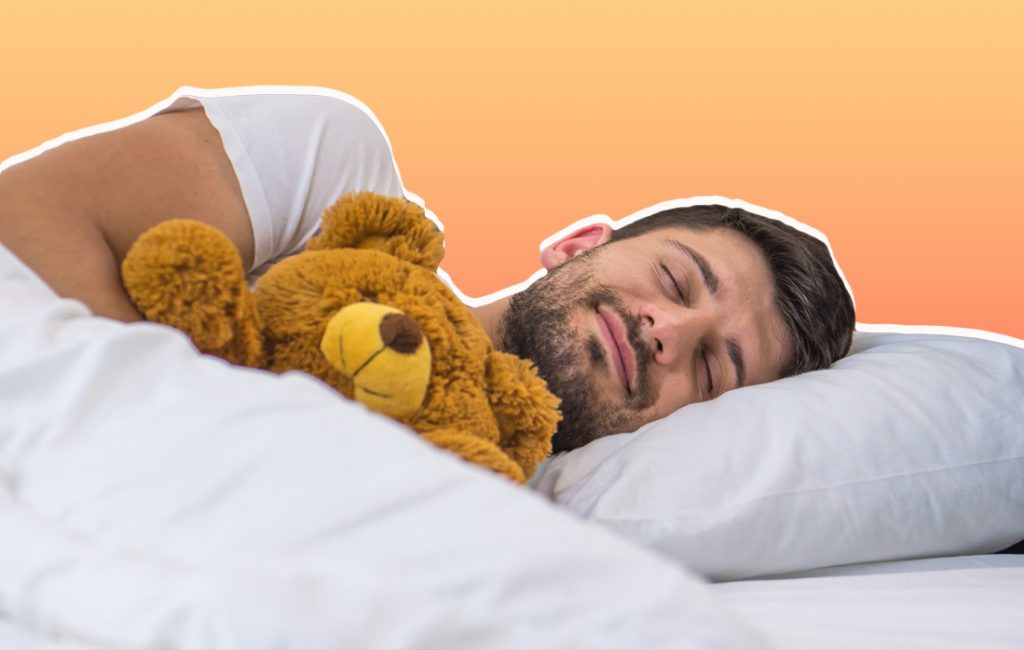
Stuffed animals are affectionately called many different things; stuffies, plushies, soft toys or even cuddly toys. But since the invention of the Teddy Bear in 1903 these items have given comfort to kids. However, the comfort doesn’t always stop for some after adolescence is long gone.
In 2017, Build-A-Bear Workshop did a survey of 2,000 American adults finding that “40 percent of respondents sleep with their stuffed animal by their side.” Additionally, “56 percent of respondents have owned (and held onto) their favorite stuffed animal for more than two decades” and 72 percent said “they plan to keep their stuffed animal forever.”
Mental Health advocate and former collegiate athlete Victoria Garrick Browne, took to her Instagram page explaining the significance of her own stuffed animal, Walla. Her husband, Max, gifted her this stuffed Koala before they started a long distance relationship in 2016 and she’s slept with him ever since. On her wedding day, Walla can be found in her getting ready photos and some videos of the day. Victoria explained, “Wedding morning I was so anxious I just brought him out with me and I was glued to him until I put my dress on.”
Sleep expert Dr. Carleara Weiss explained that adults find comfort with stuffed animals simply because we all need reassurance and comfort that comes easily.
“By having some object that breeds comfort, it releases more endorphins and serotonin, and by increasing serotonin we are also increasing melatonin,” she said. “Melatonin has also been associated with depression so having higher levels of melatonin promotes less depression.”
Depression and anxiety rates have risen since the beginning of the Covid pandemic and according to research at Boston University School of Public Health, depression is affecting 1 in every 3 American adults. Additionally, according to the National Institute of Mental Health, 31.3 percent of US adults experience an anxiety disorder in their lives and an estimated 19.1 percent of US adults have had an anxiety disorder in the past year.
But even with all these positives, probably at some point in your adolescence, you might have been told to stop sleeping with your favorite stuffie, or you might have stopped because it was perceived as childish.
“There’s a taboo because our society tends to label what specific age we must grow out of certain behaviors, there’s all the childhood development phases we go through as we grow older, but as an adult we try to find things that resonate with us” Dr. Weiss said.
Dr. Weiss gave the example of when she recommends people have a bedtime routine. People respond with, ‘‘well that’s something we do for kids,’ however, it’s something we should never stop doing because it’s beneficial to our health.
“If having a stuffed animal or a specific blanket or a specific pillow brings you comfort we shouldn’t see that as a taboo, if it’s helping to reduce anxiety and depression and helping you to sleep better, it shouldn’t be a taboo,” Dr. Weiss explains.
While it’s not a bad thing to continue to sleep with a stuffie into adulthood, in some circumstances people get very attached, making it difficult for them to sleep without a stuffed animal. This is when you should consider how much your stuffie is helping you.
But Dr. Weiss warns this doesn’t just happen with stuffed animals, “I’ve seen in airports adults traveling with their pillow from their house, and while it’s not a stuffed animal but it has the same representation.” This is one downside if you get too attached to your stuffed animal or any specific object that you need to bring it around all the time.
At the end of the day, do what works for you. And if you sleep with a stuffed animal, you aren’t alone.



























